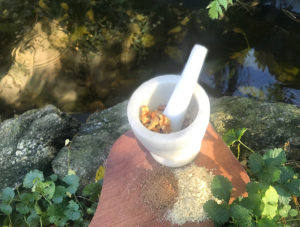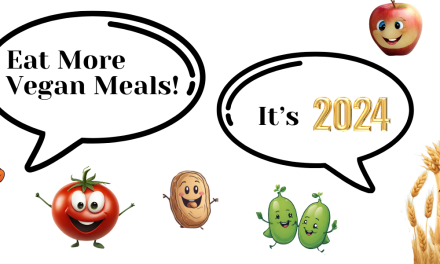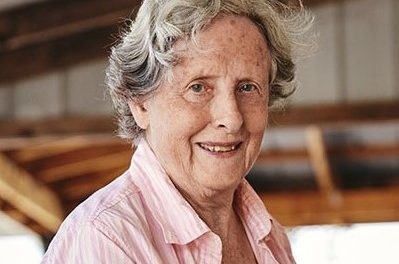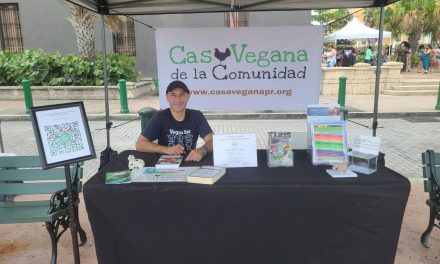Label wars continue in the US, with attempts by the dairy sector to restrict the word “milk” (along with “butter” and “cheese”) to cow-based versions. But these campaigns are belied by nondairy food traditions in North America.

In some areas, infant “formula” was made from a mixture starting with ground walnuts and water.
Food journalist Avery Yale Kamila discusses Native American traditions for making milks, butters, and cheeses from nuts in a new article, “Americans have been enjoying nut milk and nut butter for at least 4 centuries.“ Kamila, who has written about vegan food for the Portland Press Herald and its affiliated newspapers since 2004, is working on a book covering Maine’s lost vegetarian history.
Maine’s Wabanaki Indians were claimed, by white European visitors, to have domesticated reindeer and fallow deer for their milk. A 1605 report by a British explorer, James Rosier, relates that the local Indians “make butter and cheese of the milke they have of the Rain-Deere and Fallo-Deere, which they have tame as we have Cowes.”
But this was erroneous — looking at the world through white-colored glasses, if you will. The Wabanaki never domesticated animals, and like most native American tribes, lived and thrived through their mastery of (plant) agriculture. Kamila’s column shows how the historical record was unwittingly distorted to mask this proto-vegan tradition.
“The Wabanaki were not domesticating wild animals,” said ethnobotanist, culinary historian, and author E. Barrie Kavasch, who has documented both nut milk and nut butter as indigenous traditional foods in the northeastern United States. “Doubtless Rosier was referring to other substances used in another way that he was totally unaware of,” Kavasch said. “In Maine especially, the Maine Indians used the resources from the nuts, which are enhanced by roasting, cooking and drying.”
Kavasch said that nuts “were also ground in a mortar with water to make a flavorful nut ‘milk’ to add to various dishes.”
Kamila goes on to note that the Wabanaki even had a kind of vegan baby “formula” based on walnut milk: After a colonial mother was abducted by the tribe along with her baby, a sympathetic Indian woman ‘taught her to pound walnuts with a little water until it “looked like milk.” To this she was instructed to add “the finest Indian corn meal, and just boil it up together.”’ The mother did so, “and found it very palatable, and soon perceived that it nourished my babe, for it quickly began to thrive and look well … I afterwards understood, that with this kind of diet the Indian children were often fed.”
The Wabanaki were not alone: In the Northeast, all the Indian nations were making nut milks and butters. “Hickory nuts were particularly prized for nut milk,” Kamila told me in a follow-up email, “and a nut soup made by members of the Cherokee nation remains popular.” Rita Laws has written extensively on plant-based food traditions among the Choctaws, and Adam Shprintzen has noted that folklore of the Osage includes vegetarian ancestors, or “peace people.”
This all ties in with what American Vegan Society (AVS) President Freya Dinshah remarked to The New York Times in the summer of 2019. In addressing the milk-labeling issue, she remarked that “we’ve had nut meats for decades, if not centuries,” adding: “We’ve had coconut milk since probably the beginning of time, and if they want to be explicit they can say cow milk and we can say soy milk. The dairy industry thinks they’ve got the corner on milk.”
AVS salutes Kamila’s Maine project and looks forward to helping spread the word about plant-based native traditions. Most fell to the wave of white European colonization, which used its cattle industry to supplant and take over tribal land while the new animals brought disease that helped destroy native populations. That’s history, and no one can undo it now. But at the very least we can acknowledge who created the first American milks, and reject the cattle-industry barons’ ownership of the term.





With all the choices available, why not leave the cows alone & remove soy & revert to the original use which is for making plastics, oils for linoleum. Soy is GMO just like the cow no matter how many organic labels placed on it. . Depravation of iron & calcium from tofu..Osteoporosis & breast cancer from consistently raped & growth hormone infected hybrid cows. Trust the science huh?